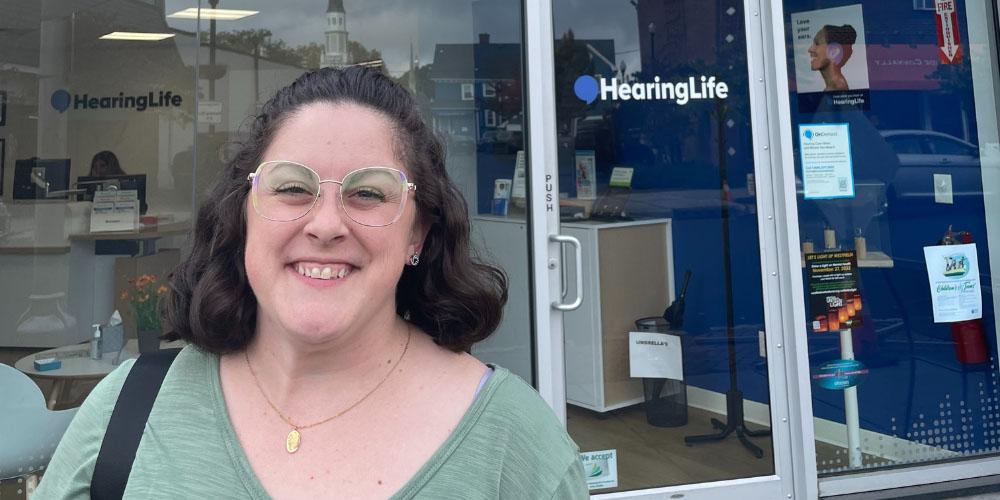When we listen, we focus on one source of sound, automatically filtering out background noise. This can be especially difficult if you have hearing loss.

of background noise.
When you get a hearing aid for the first time, you have a different issue. You may suddenly hear ordinary noise—from car horns to buzzing from electric equipment—that previously didn’t bother you. You may be overwhelmed—because the modern world is full of noise.
Loud restaurants are a particular sore point. It’s not just you—public places are louder these days. The New York Times documented the problem, measuring the din in restaurants and bars and also stores and gyms across the city, 37 spots in all. It reported that a third were so noisy the volume endangered their employees’ hearing.
How can you fight back? There are ways, and hearing aids give you extra options. You’re the sensitive canary in the coal mine, picking up noise pollution. Resist the temptation to take your aids off and instead learn to use their features.
Resist the temptation to take your hearing aids off and instead learn to use their features.
Master hearing aid technology
Modern hearing aids can filter background noise
If you have hearing loss in both ears, you need two aids so you can distinguish the source of sound and better filter out distractions. Modern hearing aid technology now allows you to choose among settings and filters that you may control with your phone, such as background noise reduction. This is known as digital signal processing (DSP), which is designed to identify background noise and lower its volume. Directional microphones within the unit are also standard. If you are attending a concert or class, for example, you could pick a setting that uses the microphones to focus on sounds coming from in front of you, rather than from behind.
Your hearing care provider will likely ask you what kind of hearing environments you are in, and may even custom program a setting for you to help overcome unusual background noise situations.
More: Shopping for a hearing aid? Here are the four must-haves
Hearing aid volume isn't like TV volume
You probably also have a volume control—but don’t think of it as the same as a volume control on a television, notes Tim Cross, a hearing instrument specialist and industry veteran at Earzlink Hearing Care in Ohio. A TV control raises all sounds equally. A hearing aid volume control tends to raise (and lower) soft and high-frequency sounds, which can be harder for people to process.

instrument specialist
However, because a lot of speech is in low frequencies raising the volume may actually make it harder to hear a conversation. “Your perception of sound is your reality,” Cross says. Experiment and speak with your audiologist for guidance. I use Sound Link 2 on my smartphone, which allows me to raise the volume from 0 to 4 and lower it to negative 8 on my Sonic aids. That’s a lot of options!
Assistive listening devices
The best settings may also vary in a room, depending upon where you sit. For special situations you might use assistive listening devices, including FM technology, which comes in two pieces: a receiver you wear around your neck, and a transmitter you would place in front of the speakers you need to hear.
Telecoils and hearing loops
Use your t-coil (short for telecoil) setting in any place where hearing loops are available. Turn it on and in many public places, you can hear sounds broadcast on the facility’s audio system through a wireless signal that is transmitted to your hearing aid. This option can make everything from a stage performance to announcements in an airport, train or subway station more understandable.
Train your ears to distinguish speech from background noise
You can train your ears—and brain—to hear better, known as auditory training. With practice, you can learn to distinguish speech more easily from noise, using hearing training apps and exercise programs available on a home computer or phone. Several of these apps can mimic difficult hearing environments to help you improve your auditory ability in different settings. If you'd like a little more help than app can provide, you can look into auditory rehabilitation with an audiologist.
Be a noise-savvy diner
Choose quiet spots
Anyone can use and contribute to SoundPrint, a phone app that founder Gregory Scott Farber, who suffered permanent hearing loss from meningitis as a baby, describes as “Yelp for noise.” The idea came to him when he was looking for restaurants to take a date. The app allows you to take decibel measurements, report your findings, and look up a “quiet list” in 11 cities based on the collected data. Farber co-authored a study of 2,376 Manhattan restaurants from 2015 to 2017 using the app, concluding that “approximately 31% of Mainstream restaurants and 60% of all bars have sound levels during peak days and hours that are potentially dangerous to the hearing health of their patrons, and even more importantly, to their employees.”
He found that Chinese, Indian, and Japanese restaurants are most likely to be quiet.
Carpets, plants and widely spaced tables are also good signs.
Eat early
Restaurants are less full and quieter before 7 o’clock. Try 5 pm in a spot that is usually loud.
Talk to restaurant staff about how they can help
Ask the host for a quiet table, away from the bar or the spot where the wait staff dump dishes.
Before you sit, check the lighting to make sure you can see your companions’ faces.
Move if you can’t see or find you’re in front of a speaker or next to a drunken crowd. If the music is especially loud, ask that it be turned down. If you’re refused, consider complaining to a manager. Over time, they might get the idea that we don’t just come for the food. Conversation matters.
More: 8 tips for dealing with restaurant noise when you wear hearing aids
You're not alone: Noise pollution is a worldwide problem
Noise pollution is maddening for everyone. When you ask for bar music to be turned down, you are fighting noise pollution, helping every patron and employee. And if you use your t-coil in the train station, you may find that you’ll be repeating the announcements to travelers without hearing loss!
Need help with hearing loss?
For help with your current hearing aids or to find out more about the latest models, see a hearing care professional. Our directory has thousands of consumer-reviewed hearing clinics, sorted by what's closest to you.
The above is the interpretation of How to Reduce Background Noise with Hearing Aids provided by Chinese hearing aid supplier Shenrui Medical. Link https://www.srmcm.com/Blog/How_to_Reduce_Background_Noise_with_Hearing_Aids.html of this article is welcome to share and forward. For more hearing aid related information, please visit Blog or take a look at our Hearing aids products















